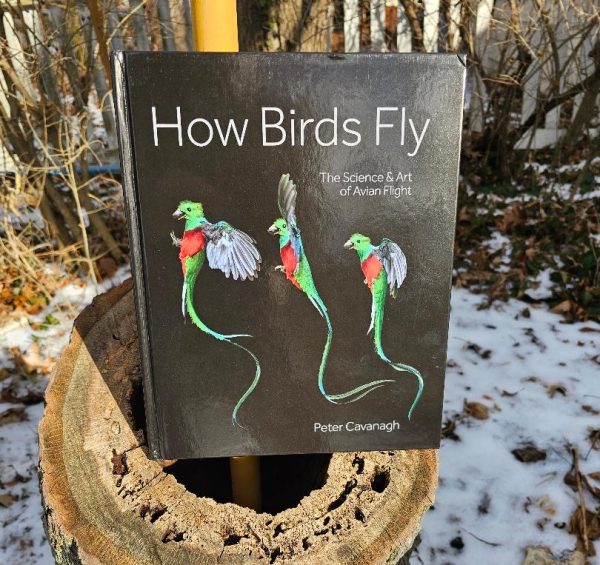
Peter Cavanagh has, he says, taken more than 800,000 photos of flying birds. Even in an era of digital photos, digital cameras and digital printing, digital this and digital that, that’s saying something. He’s also an airplane pilot, familiar with aeronautics – and a very able wordsmith, to boot.
So we trust you were gratified if you took our advice, perspicacious as (we hope) usual, from this website’s end-of-year posting of several years ago – viz., that Cavanagh’s 2021 book, 100 Flying Birds: Photographing the Mechanics of Flight, would make a great gift, or addition to your shelf, because it was (and is) photographically, and otherwise, magnificent.
Now Cavanagh has a new book, How Birds Fly: The Science & Art of Avian Flight which, if anything, is more magnificent than the first. It includes, again, awe-inspiring bird photographs, such as this one, of a female and male Northern Harrier,
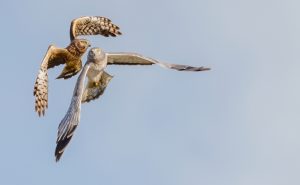
or this one, of a Magnificent Frigatebird in Brazil, which appears in the book’s chapter on Gliding and Soaring:
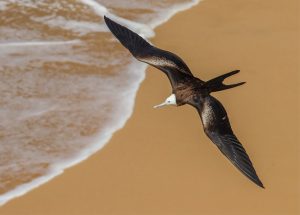
The frigatebird’s tapered “high aspect ratio wings with low wing loading” is very different from other soaring birds (such as the Black Vulture), Cavanagh explains, because of the different lifestyle needs: the frigatebird can and will stay aloft for many days without landing, while the vulture needs to land near, and take off from, land-based carrion sites.
That discussion – the reasons why and how two soaring birds are so unlike – exemplifies the big difference between Cavanagh’s first book and How Birds Fly, evident in the title and subtitle: this new book includes specific, and sophisticated, textual information about how, precisely, the flying thing occurs. There are thirteen chapters covering such topics as the evolution of bird flight, aerodynamics, in-flight maneuvers, flapping, migration, and others. All of these include detailed sub-topics that even you, as a serious birder, may likely have never considered.
Chapter Three, for example, titled “Flight Equipment,” covers myriad aspects of anatomy and morphology (the science of size and shape). Here is a Black-headed Trogon (from Belize) showing off, Cavanagh says, the components of his flight equipment:
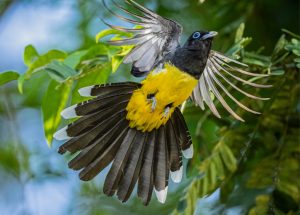
– but, as the chapter makes evident, there are many more components to “flight equipment” than what is visible; two dozen subsections of the chapter discuss bones and muscles, the furcula (wishbone), pneumatic bones, feathers and feather structure, wing shape and wing folding, and others.
This is all set forth in some scientific detail, and Cavanagh is a gifted guide through the complexity. In his explication of the bone structure, for example, he points out how wing structure and support are in some respects analogous to the human shoulder, elbow, and hand, and in some respects quite different — with multiple apt illustrations.
Graphically, How Birds Fly is stunning, and not just because of the photos. Included, as well, are examples of amazing digital art, and multiple computer-generated images, and plain-old drawings — some of the latter mixed with charts and graphs — that accompany the text, and make the book both satisfyingly rigorous and accessible to the layperson. In the Chapter Three subsection on “wing shape,” for example, an illustration shows the wings (scaled to the same length, as Cavanagh points out, to emphasize shape) of seven very different birds, from Bar-tailed Godwit to hummingbird to Brown Creeper to Peregrine Falcon, and color codes (in seven different hues) the primaries, secondaries, primary coverts, secondary coverts, marginal coverts, scapulars, and alula, the purpose of all this being to show how different lifestyles require differently-configured wings. It makes for a marvelously interesting illustration, pleasing to the eye, and a wonderful way to learn.
The book is full of that sort of thing. In one of the opening chapters, on the evolution of bird flight, there is an illustration of the digitally segmented and color-coded skull of Asteria’s bird, first reported in 2020, and claimed as the last common ancestor of current waterfowl and landfowl. (Asteria was the Greek goddess who, to escape Zeus’s romantic pursuit, transformed herself into a quail and swam away — just as Asteria’s bird, so the theory goes, made evolutionary transformations just in time to escape (that is, survive) the K-Pg extinction of 66 million years ago).
Bird/flight evolution is still being puzzled out today. What Cavanagh’s treatment of how dinosaurs got off the ground in the first place makes clear that maybe there was no “first place” — as he writes, “there may have been multiple evolutions of flight, with different means of getting airborne.” Or, as another commentator said, “what a gloriously messy business it is to tease apart the evolutionary tangles that we retrospectively account as an ‘origin.'”
In addition to its other merits, How Birds Fly would seem the perfect mix, equally suitable as a picture book to entertain the weekend warrior-type birder, and a technical sort of work for the reader desiring the meat and guts, so to speak, behind the images. Each chapter ends with a page styled “From the Lab,” which sets forth a research question and hypothesis, the citation for the academic literature cited, and the conclusions. In, for example, the later chapter “Losing Flight” (about how certain species, after emigrating to their (now) homes, lost the ability to fly), the question posed is “how do penguins swim underwater?” with part of the conclusion being that penguin “flight” in the water differs from typical bird flight in the air. And in Cavanagh’s chapter titled “Takeoff and Landing,” the “From the Lab” page asks “Do [waterbirds] land by compass?” with the given conclusion, from researchers at the Czech University of Life Sciences, being (pretty much) yes: the purpose is (perhaps) “to facilitate flock formation in an escape context and . . . to prevent collisions.” And the book has extensive endnotes, as well, with references to the relevant scholarship.
Here are two of the photos used in the “Takeoff and Landing” chapter, of an Atlantic puffin, feet front and center to facilitate a cliff-top landing (the puffin lands on heights because later, it will take off into the air by basically throwing itself off the cliff):
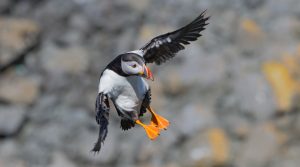
. . . and a marvelous Black-billed Mountain Toucan in Columbia (below) with (Cavanagh’s caption reads) “the brakes fully on, having just completed a braking wingbeat and maneuvered its body into an upright posture”:
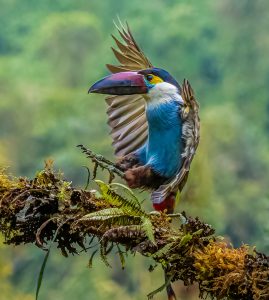
We try to be perspicacious in our book-recommendations not just because we like big words (though we do), but because you, reader, deserve it. So here’s another one: How Birds Fly is a masterpiece.
P.S. Look at the opening Great Grey Owl video on Cavanagh’s website — very cool.
______________________________________________________________________________________________
How Birds Fly: The Science & Art of Avian Flight. By Peter Cavanagh. Firefly Books, December 2024, 336 pp., $49.50. ISBN-13: 978-0-2281-0486-5, ISBN 10: 0-2281-0486-6


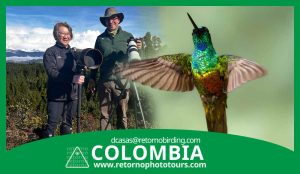
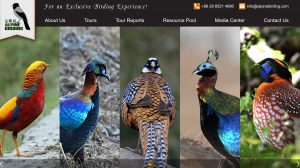
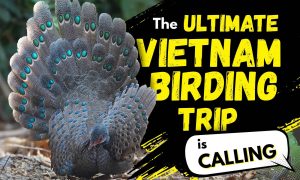
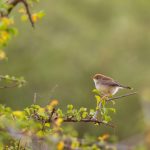
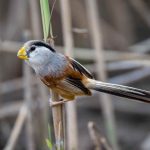
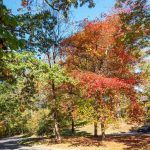
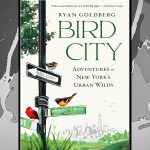
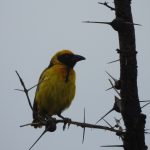

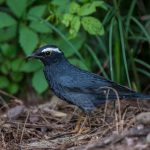
Leave a Comment